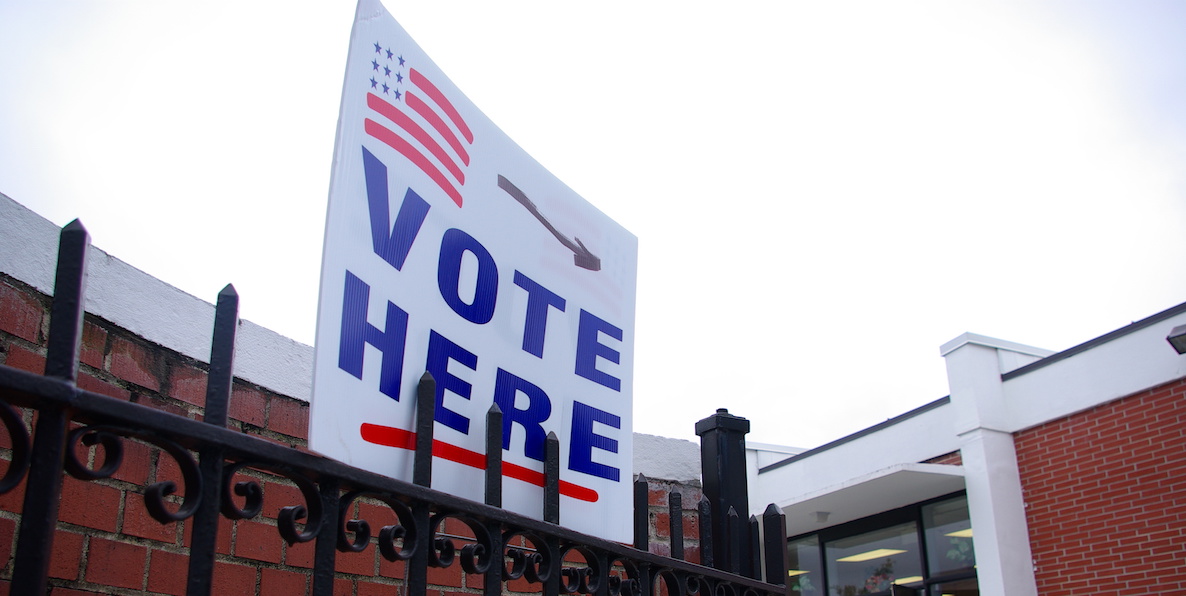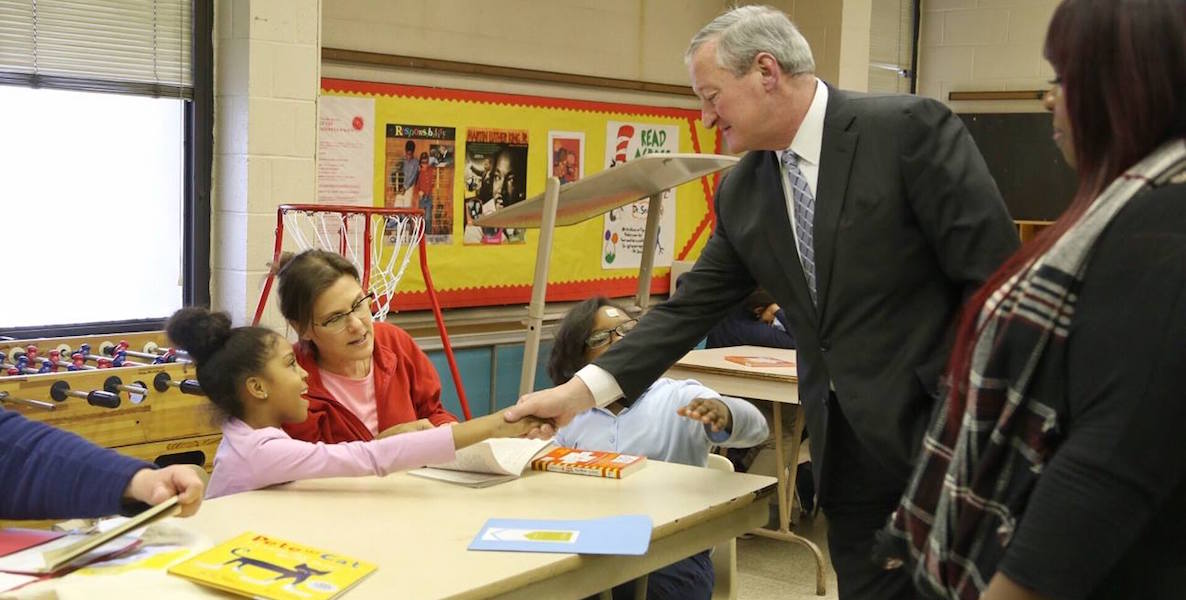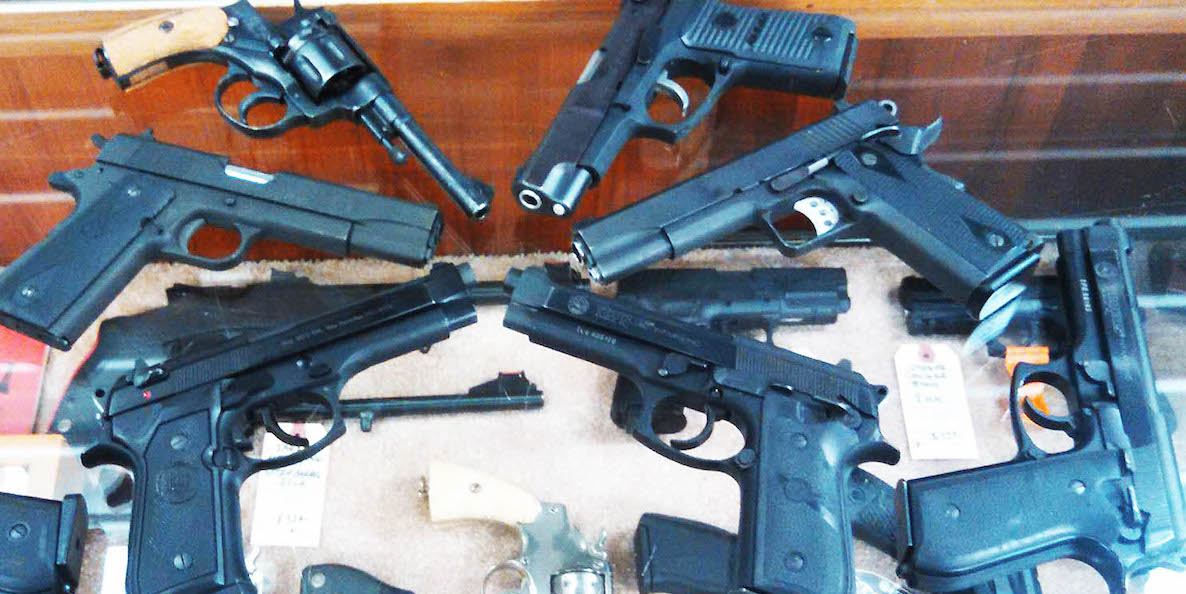Earlier this month, with a withering glare across the Delaware, New Jersey Gov. Phil Murphy took the state of Pennsylvania to task for its lax gun laws. And it’s hard to blame him: According to a recent report, more than 75 percent of the guns used in New Jersey crimes originate elsewhere—including Pennsylvania, the single biggest exporter of crime guns into the Garden State.
Be Part of the Solution
Become a Citizen member.Even besides proximity, it’s easy to understand why: While the Garden State has some of the toughest gun restrictions in the country, Pennsylvania is decidedly gun-friendly. It’s remarkably easy to buy a gun—or several—and transport them across state lines, where they end up in the hands of murderers and armed robbers in New Jersey and in New York, along with guns from other states along the so-called Iron Pipeline—Pennsylvania, Virginia, North and South Carolina, Georgia and Florida.

Prefer the audio version of this article? Listen to this story in CitizenCast below:

That guns travel illegally across state lines has long been known by law enforcement officers—including by those in New Jersey who at least as far back as 2006 were complaining about the firearms bridge between our two states. But until now the details of that trafficking have been murky.
That’s why in late 2016, the New York Attorney General’s office unveiled its Tracing Analytics Platform, a publicly-accessible online database of the guns used in New York crimes over a 10-year period. The platform allows users to trace what kinds of guns, from where, bought by whom and when, are used in the state’s gun violence. A slightly different version is now available just to law enforcement agencies throughout the state, which can eventually use it to build cases against gun traffickers up and down I-95.
Tracing the provenance of a weapon recovered at a crime scene is like something straight out of 90s Law & Order. The closest national reporting system for crime guns comes from ATF, which once a year releases a PDF—intentionally not searchable—with the barest of gun data.
“We were able to get a snapshot really quickly of where the worst guns are ending up and where they started,” says former senior adviser in the AG’s office Nick Suplina, who now works for Everytown for Gun Safety. “Out of 50 states, there was not an even distribution of source states when it came to New York, and it wasn’t necessarily based on proximity. States as far away as Florida were leading contributors of guns here.”
Federal law prohibits the Bureau of Alcohol, Tobacco and Firearms from keeping a registry of who owns guns in America, and mandates that the FBI destroy all gun purchaser records within 24 hours of their background check going through. So tracing the provenance of a weapon recovered at a crime scene is like something straight out of 90s Law & Order. Cops take down the make, model and serial number of the gun, along with where, when and from whom it was recovered. They send that to ATF, which calls the manufacturer to find the gun shop where it was first sold.
Then ATF agents get in touch with the shop. Gun sellers are required to keep records about who bought their guns, at the very least by maintaining the paper forms filled out by buyers. Assuming no fire or flood has damaged them in the meantime, the shop owner tracks down the form and shows it to ATF. ATF then sends that information back to the police department.
This process can sometimes take several weeks, but when a trace is completed, it reveals a few points of data that can be of interest: time to crime—the amount of time that lapsed between the original sale and the crime; how far the gun traveled from shop to crime scene; and how often it changed hands. If the time is short, the distance great and the gun in different hands than those that bought it, Suplina says it is likely a trafficked gun.
A gun tracing platform here could illuminate the path of guns from rural Pennsylvania to homicides in Philly, or Philly neighborhoods to armed robberies in Pittsburgh. And the trading route for guns could be indicative of other illegal activity, too—like drugs from New York and points south.
That information can help to solve a crime, or serve as evidence during a prosecution; it can tell the story of that one particular gun. The Tracing Analytics Platform can tell a story about gun trafficking down to the neighborhood and types of guns, to help identify straw buyers, travel routes and rings of suppliers. “You could have five gun recoveries within 30 blocks of each other in New York City all bought by the same person at the same store in Pennsylvania, all recovered five years apart,” Suplina says. “On the next gun recovered, this allows us to look backwards and see a pattern, and to intervene.”
![]() That this is a revolutionary innovation says something about the state of firearms research in the United States, where federal funding for any kind of look at gun violence is almost nonexistent. Right now, the closest national reporting system for crime guns comes from ATF, which once a year releases a PDF—intentionally not searchable—with the barest of gun data: The number of recoveries, some time to crime information, the general location of the crimes committed.
That this is a revolutionary innovation says something about the state of firearms research in the United States, where federal funding for any kind of look at gun violence is almost nonexistent. Right now, the closest national reporting system for crime guns comes from ATF, which once a year releases a PDF—intentionally not searchable—with the barest of gun data: The number of recoveries, some time to crime information, the general location of the crimes committed.
“It’s designed to keep you from getting down to any sort of detailing in terms of data,” says Rose Cheney, former Executive Director of Penn’s Firearm & Injury Center. “It can be very frustrating very quickly; you know you technically could cross reference the data, but operationally it’s not very easy.”
Getting a handle on who should not have guns has in many ways gotten harder. In the 1990s, under President Clinton, several dozen cities participated in the Youth Crime Gun Interdiction Initiative, a federally-funded program that traced every gun police officers found on juveniles to see where they came from. (Any gun found with a juvenile was an illegal gun.) That resulted in the sorts of reports and data sharing that helped jurisdictions work with each other to fight gun trafficking—until, in the early aughts it was defunded by the federal government.
Meanwhile, the 2003 Tiahrt Amendments passed by Congress as part of a Department of Justice appropriations bill severely curtailed the information that agencies could release, share with each other and act on. (This is where the FBI rule to destroy purchaser records comes from.) Originally, the law also prohibited ATF from disclosing any gun trace data except as it pertained to a particular case or from aggregating data to identify dealers linked to crime guns. Those restrictions have been lifted somewhat—though the data can still not be used for any sort of civil lawsuits.
“You could have five gun recoveries within 30 blocks of each other in New York City all bought by the same person at the same store in Pennsylvania, all recovered five years apart,” Suplina says. “On the next gun recovered, this allows us to look backwards and see a pattern, and to intervene.”
To create the Tracing Platform, the New York AG’s office drilled down into ATF data to create a map and database of the 52,000 guns recovered in New York State from 2005 to 2015, searchable by several different inputs; it allows users, for example, to look at handguns—difficult to purchase in New York—that started in Pennsylvania and landed in New York City (2,843), or at all guns recovered just in Rochester. That proof of concept informed a more specialized tool that NYPD and New York state police have started to use in the last several months.
Eventually, the platform could form the basis for launching interstate or federal trafficking cases. “If I walk into a gun show in Pennsylvania and buy some guns, and two end up in a crime, no one knows if there are 13 more out there—but there probably are,” says Suplina. “Now if you have a guy arrested with a gun in New York City, it isn’t just a robbery. It can be a conversation about where you got this and how many more guns are out there.”
The data can also start to inform policy discussions with a clear eye: Studying time to crime data over a period of years can bolster the argument that it makes a difference when you restrict the number of guns purchased at once, for example. The information might help bolster anti-straw purchasing laws, or create a better system for interstate investigations. It might show law enforcement whether gun buybacks are matching crime guns—or if resources could be better used.
“This lets you look at if some of stuff you’re doing is shifting or clamping down on the problem,” says Cheney. “In New York state, for example, it shows that regulations are working to keep things down in the state—that’s why people have to go elsewhere for their guns.”
![]() In Pennsylvania, one of those places people go, there are some 9,000 crime guns recovered and traced a year, including around 3,500 in Philadelphia. More than half of all crime guns in Pennsylvania come from in-state; many are still being bought by straw purchasers in one city, who sell them to someone else, who may use them in a crime. A gun tracing platform here could illuminate the path of guns from rural Pennsylvania to homicides in Philly, or Philly neighborhoods to armed robberies in Pittsburgh. And the trading route for guns around and through Pennsylvania could be indicative of other illegal activity, too—like drugs from New York and points south, for example. “Trade routes go both ways,” Cheney notes. “It means there’s an illegal conduit between two spots and things are out of control.”
In Pennsylvania, one of those places people go, there are some 9,000 crime guns recovered and traced a year, including around 3,500 in Philadelphia. More than half of all crime guns in Pennsylvania come from in-state; many are still being bought by straw purchasers in one city, who sell them to someone else, who may use them in a crime. A gun tracing platform here could illuminate the path of guns from rural Pennsylvania to homicides in Philly, or Philly neighborhoods to armed robberies in Pittsburgh. And the trading route for guns around and through Pennsylvania could be indicative of other illegal activity, too—like drugs from New York and points south, for example. “Trade routes go both ways,” Cheney notes. “It means there’s an illegal conduit between two spots and things are out of control.”
Joe Grace, spokesman for Pennsylvania Attorney General Josh Shapiro, says a gun tracing platform like that in New York has “a lot of potential value here as well,” and the office is exploring ways to coordinate with state and local law enforcement agencies around gun data. Given Pennsylvania’s close ties to the National Rifle Association, the careful exploration is understandable. Any efforts to track guns, even those involved in a crime, invariably raises the specter of a government registry that the NRA says could lead to jackbooted guardsmen coming for your guns. “The focus would be on illegal guns,” Grace stresses, “and there still needs to be a fair amount of policy work and coordinating work before we can decide the feasibility of moving forward.”
If Shapiro does decide to bring a tracing platform here, Suplina says New York would be happy to share the technology; he’s also planning a version for Everytown that would be more in-depth and include a way to input data about ballistics and gunshot injuries, among other additions.
“The whole point was getting people thinking about this—law enforcement, the public, the press,” says Suplina. “We’ve done that in New York. Now we can do it anywhere else.”







